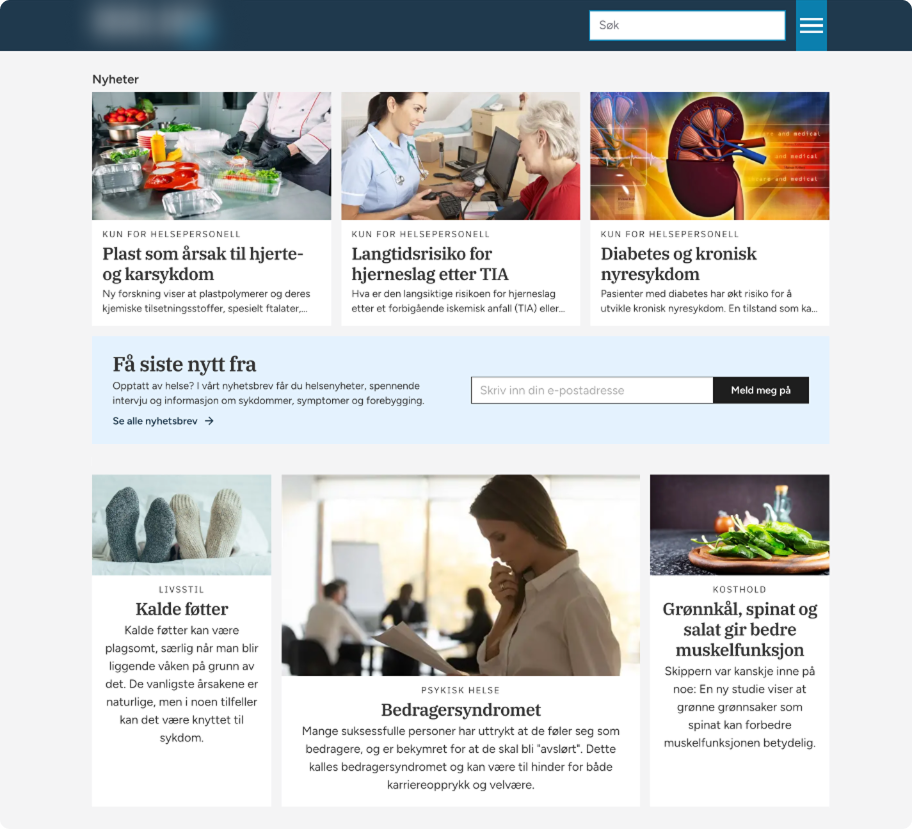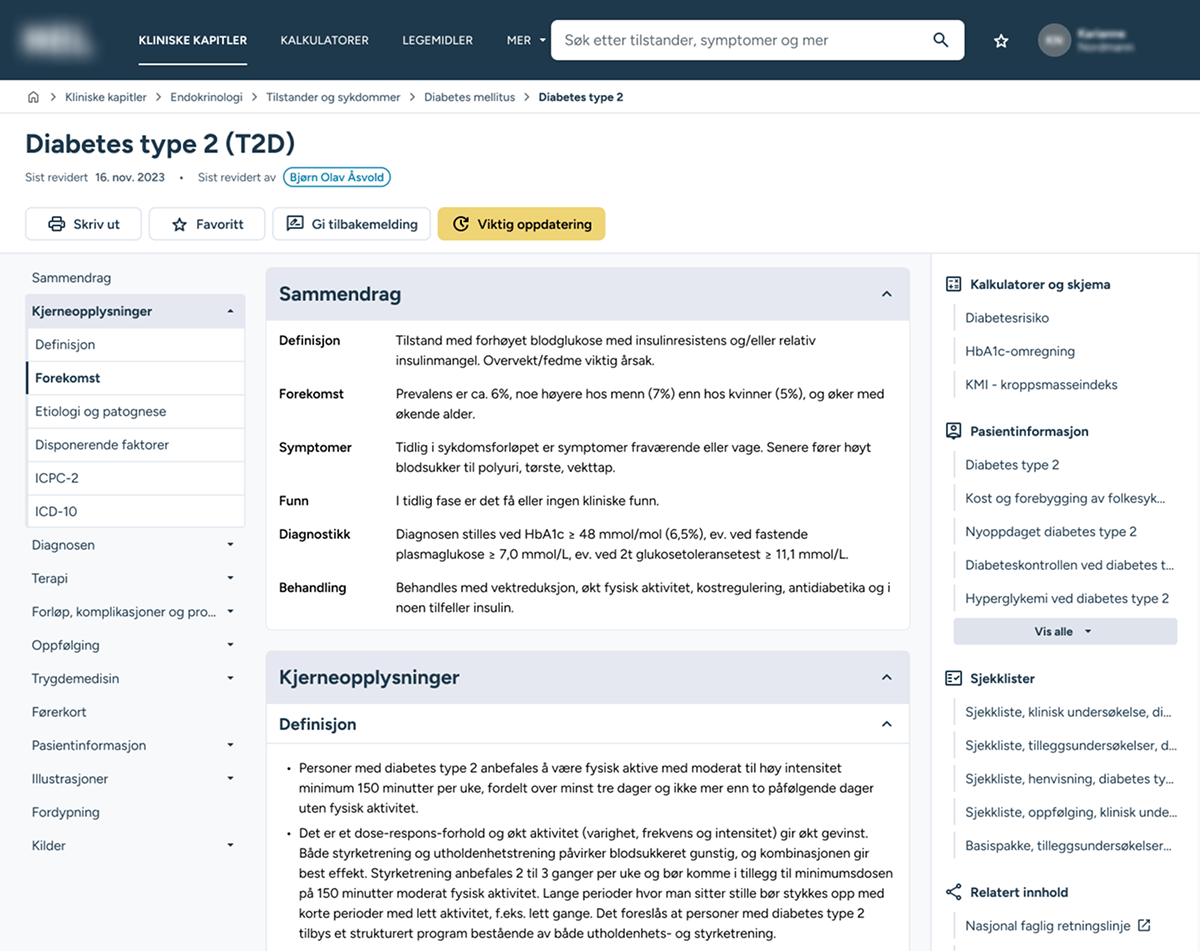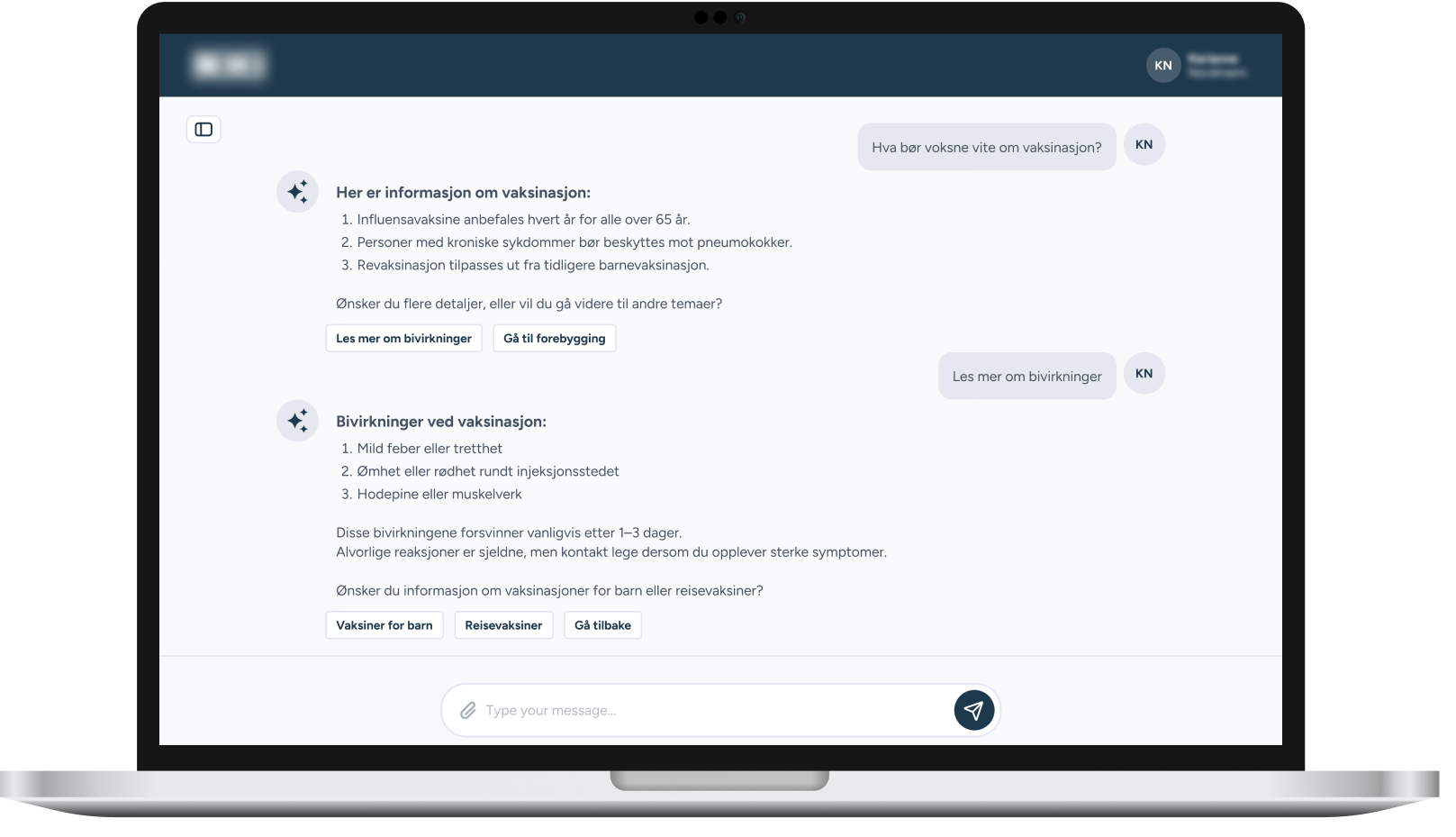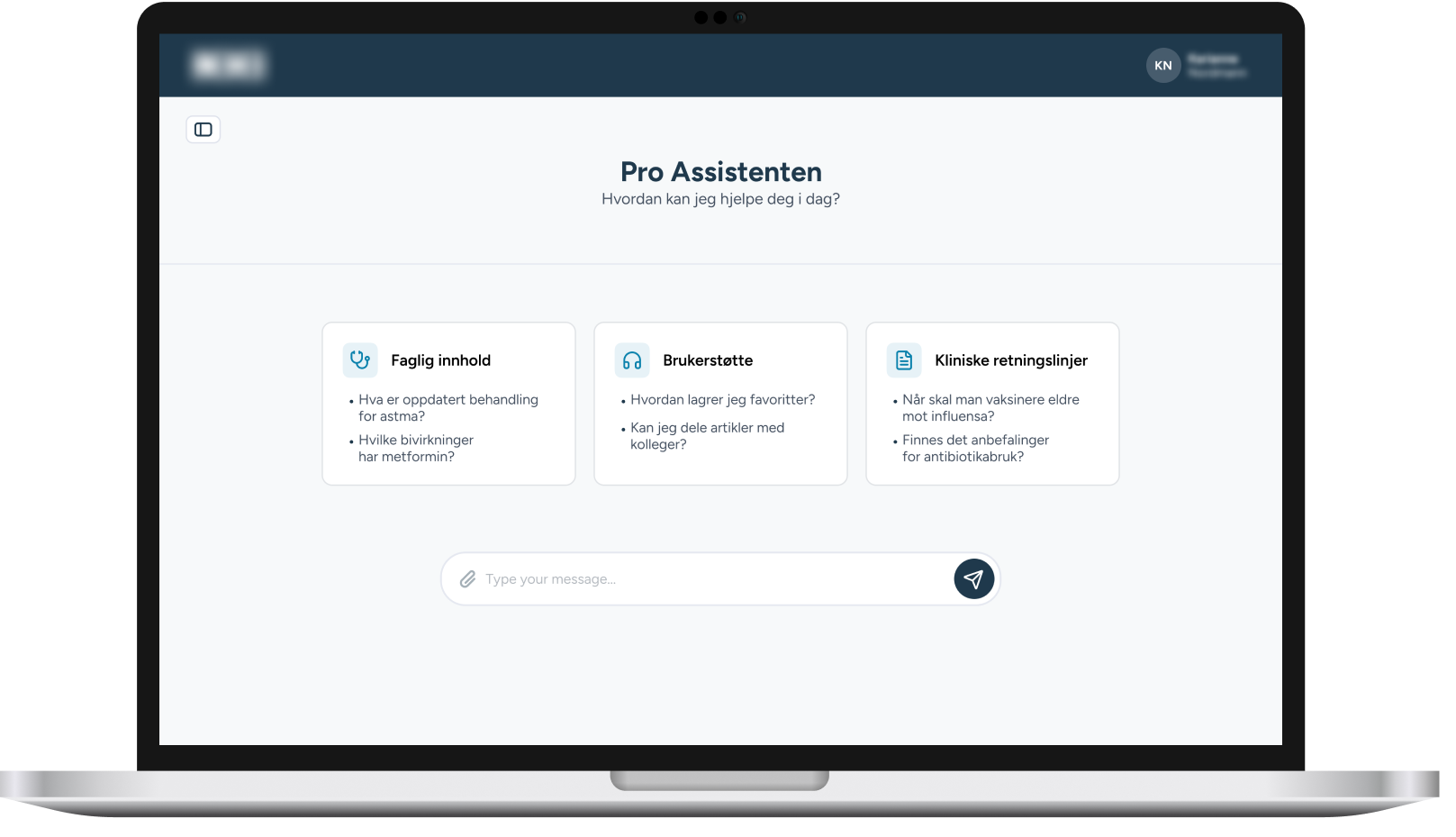Cloud Content Hub with AI Chatbot for Health Personnel
The Norwegian Electronic Medical Handbook is a cloud-based content hub for doctors and health personnel across Scandinavia and parts of Western Europe. Nearly 200 medical experts continuously update it, and it contains around 7,000 quality-assured documents with source references.
Through a phased transformation, starting with core architecture modernization and evolving into embedded AI, this platform is becoming a responsive, intelligent clinical companion, purpose-built to scale with evolving healthcare delivery.
Technical stack includes:
- Backend: .NET 5, ASP.NET Core, Node.js, NestJS, MediatR, NServiceBus
- Frontend: React, JavaScript
- Databases: MS SQL, Azure SQL, PostgreSQL, MongoDB, PG Vector, Redis
- AI/ML: OpenAI models, Multi-agent system, n8n workflow automation
- Authentication: IdentityServer 4, OAuth 2.0, OpenID Connect, Auth0
- DevOps: Docker, Kubernetes, Azure DevOps
- Integration: Twilio SendGrid, OpenAI
- Testing: xUnit, Moq, Cypress, NBomber
- Architecture: DDD, CQRS, Event-Driven, SOA, Clean Architecture
Our Client
Our client is Scandinavia’s leading provider of health information for medical professionals.
Nearly all GPs in Norway use their initial system alongside hospitals and public services. It also offers e-learning for health personnel and runs Norway’s largest health information portal.
Development Stages
- Digitalization of a legacy system
- First steps in AI Transformation: Q&A chatbot
Project-Based Team
To address slow development, legacy code, and limited scalability caused by an outdated monolithic system, we deployed a dedicated team of 5 engineers. They fixed poor UX/UI, rigid user permissions, and integration issues to modernize the platform and boost performance under high load.
Later, we analyzed the options, and then deployed a project-based AI team to deliver a foundational AI feature and map out future transformations. We suggested building new features on existing microservices and Azure cloud for secure deployment.

Initial Client's Challenges
- Outdated monolithic architecture that slowed down development.
- Poor UX/UI leading to low user satisfaction and productivity.
- Rigid user roles and permission system with limited flexibility.
- Difficulties integrating new features due to legacy code.
- Limited scalability and performance under high user load.
Modernization Solution
- Ardas’ dedicated team led the full-cycle product development and modernization.
- Refactored the entire codebase using modern engineering standards.
- Converted the monolith architecture into scalable microservices with well-defined modules.
- Implemented granular user access control with customizable permission levels.
- Revamped UX/UI design, applying best practices for enhanced usability.
Key Product Features
- Live medical updates
- Smart search & filters
- Role-based access
- EHR integration

Delivered Results for Modernization Phase
- Faster Development & Scalability: Microservices architecture enabled faster development and improved scalability.
- Enhanced User Experience: Revamped UX/UI increased user satisfaction and productivity.
- Flexible Access Control: Granular user permissions provided customizable access levels.
- Seamless Integration of New Features: Refactored architecture allowed smooth integration of new features.
- Increased System Reliability: Modern technologies improved system reliability, uptime, and performance.
AI Transformation Phase
With the digital core stabilized, leadership moved toward AI adoption.
Despite strong strategic alignment at C-level, the client's CTO faced a gap in talent and expertise to deliver further transformation securely and at scale.
Our Solution
Ardas team analyzed the possible options, and then deployed a project-based AI team to deliver a foundational AI feature and map out future product transformations.
We suggested building new chatbot features on existing microservices and Azure cloud for secure deployment.

First AI Feature: Q&A Chatbot
A natural language chatbot trained on the entire medical handbook allows clinicians to:
-
Ask questions in natural language;
-
Get precise, real-time answers fast;
-
Summarize big guidelines instantly;
-
Search needed documents contextually.
AI Transformation Phase Results
-
40% less time spent on manual document search
-
25% higher adoption of evidence-based practice
-
30% faster, secure rollout of AI features without disrupting core services
Next Steps: Future AI Capabilities
- Clinical note auto-summarization;
- Personalized content based on clinician specialty;
- Workflow-integrated recommendations.

Get Insights from Real SaaS Builds
Enjoyed the read? We write these case studies and articles to share what works — and what doesn’t — in real SaaS delivery. Got a challenge of your own? Let’s talk tech.

Ryzhokhin